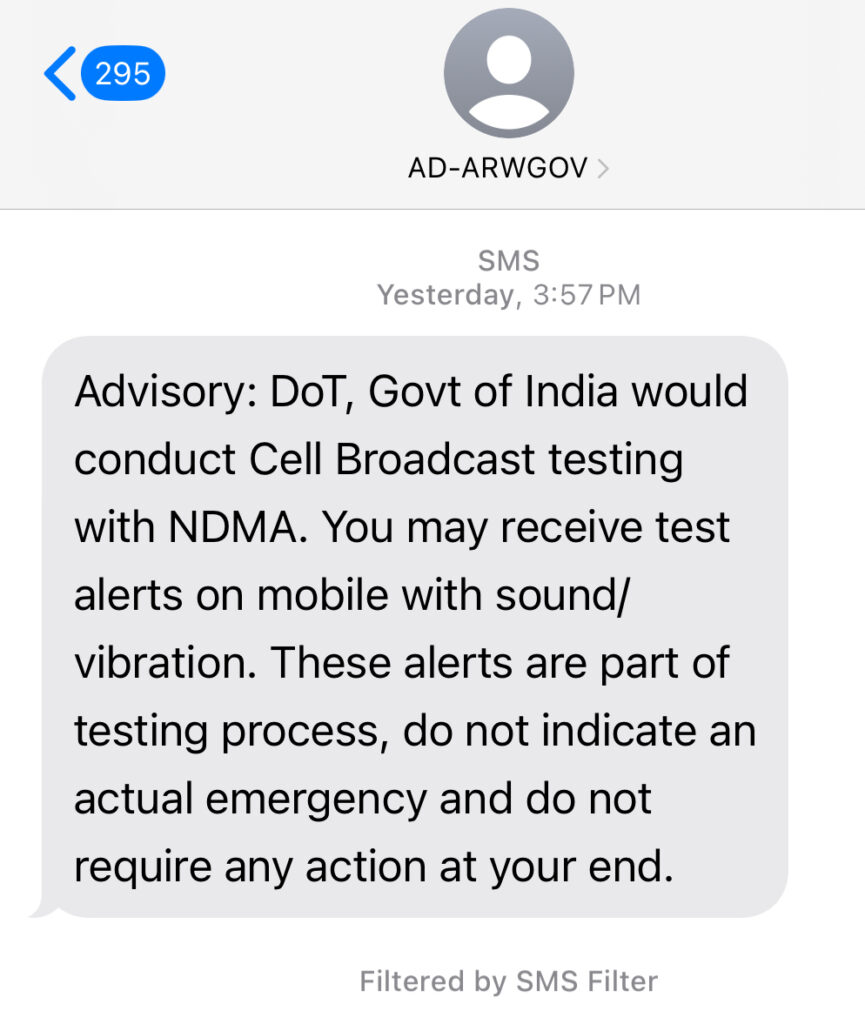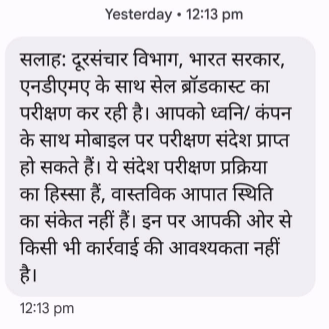
Why do I receive the NDMA alerts on my mobile?
On September 29, 2023, the National Disaster Management Authority (NDMA) issued an alert notification to all mobile phones in India. The notification warned of a possible tsunami in the Andaman and Nicobar Islands and asked people to evacuate to higher ground.
Many people were worried when they received the alert notification. However, there is no need to panic. The NDMA issued the notification as a precautionary measure. There is no immediate threat of a tsunami.
The NDMA regularly issues alert notifications to warn people of potential disasters. These notifications are sent to all mobile phones in the area where the disaster is expected to occur.
If you receive an alert notification from the NDMA, it is important to follow the instructions that are provided. This will help you to stay safe and protect yourself from harm.
Why does NDMA send alerts on mobile?

The NDMA sends alerts on mobile to warn people of potential disasters and to provide them with information on how to stay safe. These alerts can be sent for a variety of disasters, including earthquakes, tsunamis, floods, cyclones, and heat waves.
There are a number of reasons why the NDMA uses mobile phones to send alerts. First, mobile phones are very common in India. Over 90% of Indians have a mobile phone, which means that the NDMA can reach a large number of people with its alerts.

Second, mobile phones are very effective at getting people’s attention. When a person receives an alert on their mobile phone, they are more likely to pay attention to it than if they received the same alert on another medium, such as television or radio.
Third, mobile phones can be used to send targeted alerts. This means that the NDMA can send alerts to people who live in a specific area or who are at risk from a particular disaster. For example, the NDMA could send an alert to people who live in a coastal area during a cyclone warning.
By sending alerts on mobile, the NDMA can help to save lives and reduce the impact of disasters.
Here are some specific examples of how the NDMA has used mobile phones to send alerts in the past:
- In 2018, the NDMA sent alerts to people in Kerala who were at risk from flooding. These alerts helped people to evacuate to safety and avoid being killed or injured in the floods.
- In 2019, the NDMA sent alerts to people in Odisha who were at risk from a cyclone. These alerts helped people to prepare for the cyclone and to avoid being injured or killed.
- In 2020, the NDMA sent alerts to people across India about the COVID-19 pandemic. These alerts helped people to learn about the virus and how to protect themselves from infection.
The NDMA’s use of mobile phones to send alerts is a valuable tool for disaster preparedness and response. By helping people to stay safe during disasters, the NDMA can save lives and reduce the impact of these events.

Here are some tips on what to do if you receive an alert notification from the NDMA:
- Stay calm and do not panic.
- Read the notification carefully to understand what is happening and what you need to do.
- Follow the instructions that are provided.
- If you are in danger, evacuate to a safe place immediately.
- Keep in touch with your loved ones and let them know that you are safe.
It is also important to remember that the NDMA will only issue an alert notification if there is a real threat of a disaster. If you receive an alert notification, it is important to take it seriously and take the necessary precautions.
Here is more information about why the NDMA sends alerts on mobile
Accuracy and timeliness
Mobile phone alerts are a fast and accurate way to warn people of impending danger. The NDMA uses a variety of sources to collect information about potential disasters, including weather forecasts, satellite imagery, and reports from ground-based sensors. Once the NDMA has confirmed that a disaster is imminent, it can send out alerts to mobile phones within minutes.
Reach
Mobile phone alerts have a wide reach. As mentioned above, over 90% of Indians have a mobile phone. This means that the NDMA can send alerts to people in all parts of the country, regardless of their location or socioeconomic status.
Target specificity
Mobile phone alerts can be targeted to specific groups of people. For example, the NDMA can send alerts to people who live in a particular area, who are registered with a particular disaster relief agency, or who have a particular medical condition. This allows the NDMA to provide people with the most relevant and timely information possible.
Accessibility
Mobile phone alerts are accessible to everyone, regardless of their literacy level or ability to speak Hindi. The NDMA sends alerts in multiple languages and in multiple formats, including text, voice, and video. This ensures that everyone can receive and understand the alerts.
Early warning
One of the most important benefits of mobile phone alerts is that they can provide people with early warning of impending disasters. This gives people time to evacuate to safety or take other protective measures.
Improved disaster response
Mobile phone alerts can also help to improve disaster response efforts. For example, the NDMA can use mobile phone alerts to send instructions to emergency responders about where to go and what to do. Mobile phone alerts can also be used to coordinate the delivery of relief supplies and services.
Increased public awareness
Mobile phone alerts can also help to increase public awareness of disasters and disaster preparedness. When people receive an alert, they are more likely to learn about the dangers of the disaster and the steps they can take to stay safe.
Reduced social and economic impacts
By providing people with early warning and improving disaster response, mobile phone alerts can help to reduce the social and economic impacts of disasters. This is because people have more time to evacuate to safety and protect their property. Mobile phone alerts can also help to reduce the disruption to essential services and businesses.
Cost-effectiveness
Mobile phone alerts are a cost-effective way to warn people of disasters. The NDMA partners with mobile phone operators to send out alerts, which means that there is no direct cost to the government.
In addition to the above benefits, mobile phone alerts can also play an important role in disaster recovery. For example, the NDMA can use mobile phone alerts to provide people with information about food and water distribution points, medical camps, and other relief services.
Overall, mobile phone alerts are a valuable tool for disaster preparedness, response, and recovery. The NDMA’s use of mobile phone alerts has helped to save lives and reduce the impact of disasters across India.
What to do if you are worried about receiving an alert notification from the NDMA
If you are worried about receiving an alert notification from the NDMA, there are a few things you can do:
- Make sure that your mobile phone is set to receive emergency alerts.
- Have a plan for what you will do if you receive an alert notification.
- Keep a go-bag with essential supplies in case you need to evacuate.
- Stay informed about the latest weather conditions and disaster warnings.
By following these tips, you can help to ensure that you are prepared for any disaster that may occur.




